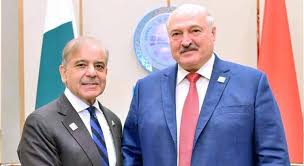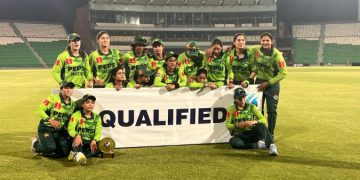Samson Simon Sharaf

Abrogation of Article 370 and 35 A open legitimate options for China and Pakistan. But in a Realist Paradigm, it is only the stronger who exercises legality. With support from the North and West, India calculated it enjoyed overwhelming support and embarked on the Kashmir II adventure.
As if its defeat at hands of China in Eastern Ladakh is no lesson, India will not resist going the edge. Intransigence is an oft repeated lesson about the rise and falls of empires.
The story of Kashmir is a tragedy in bloodshed for over a century; an endless tale of betrayals, British merchantilism, geo strategic intrigues and elastic ethics. Kashmir proves on a time scale that no military force or technology can subdue hearts and minds.
Kashmir dispute involves eighteen million people in a time warp for over a century. It is surrounded by four countries three of which are nuclear. It is larger than 103 and more populous than 129 countries. Since 1947 over 500,000 Kashmiris have died at the hand of the Dogra and Indian occupation. The killing fields are still live.
Kashmir is a leftover of the British Colonial legacy of 19th century. The state of Jammu and Kashmir came into being on 16 March 1846 when the TREATY OF AMRITSAR was signed between Raja Gulab Singh of Jammu and East India Company to settle a territorial dispute arising from the First Anglo-Sikh War. People were traded off as slaves. Prior to Partition, Britain allowed the Congress politicians to tamper with the partition plans and 1935 Act to facilitate occupation of Kashmir and other princely states.
But history as it reveals itself tells another story. The Cabinet Mission Plan of 1945.
“In agreeing to Jinnah’s project, the British also managed to whittle down Jinnah’s territorial demands to the minimum required for Britain to safeguard its defence requirements. Plan for smaller Pakistan was not worked out by Mountbatten in 1947 as generally believed but by Lord Wavell in 1945”
Narendra Singh Sarila ex ADC to Lord Mountbatten
Post-World War II, Pakistan was seen an important western ally in the evolving Cold War against Russia. India was drafted to contain China. As the geopolitics shifted, Kashmir was forgotten by the international conscience as it affected their global outreach.
Historians cite that Nehru’s agreement for the exercise of the right of self-determination was malafide and conniving. He was convinced Pakistan would fail in ten years. Plebiscite option was influenced by British. He failed to economically quarantine Pakistan. It is no coincidence that Nehru went back on his words in 1957 and then illegal legislations began. British archives made public indicate, that boundary lines were not drawn by Mountbatten but by Sir Frank Wavell. Britain therefore has a legal, moral and ethical responsibility.
Legally, the Indian argument can be challenged on many counts.
The amended Government of India Act of 1935 provided in Section 6 that “a princely Indian state shall be deemed to have acceded to either of the dominion on the acceptance of the Instrument of Accession executed by the Ruler thereof” as a logical heir to the British Crown was illegal. India excluded the phrase “will of the people”.
In the Madhav Rao case, the Supreme Court of India found it strange that India inherited any aspects of the paramountcy exercised by the British Crown.
Indian Supreme Court in Premnath Kaul and the Jammu and Kashmir High Court, in Magher Singh, observed that with the lapse of the British paramountcy, the princely Indian state of Kashmir became independent and sovereign in the fullest sense of international law a stand also taken by Pakistan.
It was Mountbatten’s responsibility as Governor General to ensure that clauses of the Legislative Act 1935 and Independence Act of 1947 should not have been tampered by India. He should have challenged the Indian claim of paramountcy and declared the Instrument of Accession illegal.
After amending the 1935 Act, India prepared the Instrument of Accession. Manekshaw’s memoirs contradict the Indian assertion that the Maharaja wrote a letter on 26 October 1947 to the Government of India, incidentally the same day that Menon and Manekshaw landed at Srinagar. He also narrates that the entire entourage of Kashmiri Leaders led by Mr. Abdullah (allegedly threatening the Maharaja) India were present at the Srinagar Airport lighting the runway with pine torches to see off Menon. I will read an excerpt from Field Marshall Manekshaw’s memoirs:
“We went to the palace. I have never seen such disorganisation in my life. The Maharaja was running about from one room to the other. I have never seen so much jewelry in my life – pearl necklaces, ruby things, lying in one room; packing here, there, everywhere. There was a convoy of vehicles. The Maharaja was coming out of one room….Eventually the Maharaja signed the accession papers and we flew back in the Dakota late at night”.
It is pertinent to mention the congruency in the amendments to 1935 Act, Instrument of Accession and Indian constitutional legislation on Kashmir over a time line. Intention was to extend control of Kashmir to India.
Article 370 was inserted to support the idea of plebiscite. This made bulk of the Indian Constitution inapplicable to Kashmir and other princely states against the will of the people/rulers.
In 1964, India extended Articles 356 and 357 of the Indian Constitution to Kashmir to dismiss elected governments and impose central rule eroding Article 370. On 30 July 1986 India extended Article 249 to Kashmir. Now the Indian Parliament could enact laws on State list subjects. On 22 February 1994 Lok Sabha declared Kashmir an integral part of India. Finally on 05 August 2020, India annexed Kashmir.
These legislations were made in contempt to UNSC Resolution 91 and 122 that said that such acts do not make for a final settlement of Kashmir.
Since 1948, there are 10 UNSC resolutions specifically on plebiscite, negotiations and non-applicability of Indian sponsored legislations. There are four other UNSC resolutions that deal with UN observers. United Nation’s position is that UN resolutions can only be terminated through UN Security Council.
Led by the United States and Britain, UNSC adopted a resolution on 21 April 1948 which noted with satisfaction that both India and Pakistan desire that the question of accession should be decided through an appointed Commission of the United Nations, of which the United States became a member, to work out a plan for the demilitarization of Kashmir prior to the plebiscite.
UNCIP proposals led to resolutions that constituted an international agreement upon being accepted in writing by both governments. Part III of the Commission’s resolution of 13 August 1948, agreed by India and Pakistan, states:
“The governments of India and Pakistan reaffirm their wish that the future status of the State of Jammu and Kashmir shall be determined in accordance with the will of the people and, to that end, upon acceptance of their truce agreement, both governments agree to enter into consultations with the Commission to determine fair and equitable conditions whereby such free expression will be assured.”
The United States, Britain and France were committed supporters. America’s President Truman and Britain’s Prime Minister Clement Atlee appealed that differences over demilitarization be submitted to arbitration by the Plebiscite Administrator, a distinguished American Admiral Chester Nimitz.
The American position was maintained equally by Republicans and Democrats. Secretary of State John Foster Dulles stated on 5 February 1957 that,
“We continue to believe that unless the parties are able to agree upon some other solution, the solution which was recommended by the Security Council should prevail, which is that there should be a plebiscite.”
In Britain, both Labor and Conservative governments consistently upheld the position that a plebiscite was the only way the dispute over Kashmir could be democratically and peacefully settled. Clement Atlee launched a conciliatory effort and conveyed to the Pakistani Prime Minister the assurance of the Indian Prime Minister that India would allow Kashmir’s status to be determined by the people’s vote.
Two years later, the Prime Ministers of the Commonwealth informally proposed alternative arrangements for the demilitarization of Kashmir prior to the plebiscite. They suggested that a neutral peacekeeping force comprising either contingents from the Commonwealth countries or local troops from both sides under the control of the Plebiscite Administrator could be stationed to safeguard the state’s security. India rejected these suggestions.
On 15 June 1962, the American representative to the United Nations, Adlai Stevenson, stated that:
“The best approach is to take for a point of departure the area of common ground which exists between the parties. I refer of course to the resolutions which were accepted by both parties and which in essence provide for demilitarization of the territory and a plebiscite whereby the population may freely decide the future status of Jammu and Kashmir. This is in full conformity with the principle of the self determination of people which is enshrined in Article I of the Charter as one of the key purpose for which the United Nations exists.“
Sir Owen Dixon, an eminent jurist from Australia reported to the Security Council on 15 September 1950 that:
“In the end I became convinced that India’s agreement would never be obtained to demilitarization in any form or to the provisions governing the period of plebiscite of any such character, as would in my opinion, permit the plebiscite being conducted in conditions sufficiently guarding against intimidation and other forms of influence and abuse by which the freedom and fairness of the plebiscite might be imperiled.”
During his visit to India in 2010, President Obama said, “Kashmir is a disputed territory and its resolution is in the interest of India, Pakistan and the region and the United States of America.’
The crises of Kashmir is best summed up by Professor Josef Korbel, Former Chairman of UNCIP – Father of Madeline Albright, Former US Secretary of State:
“The accession of the State of Jammu and Kashmir to India cannot be considered as valid by canons of international law… The history of the case has made it clear that time has only aggravated, not healed the conflict; that neither the Pakistanis nor the Kashmiris will accept the status quo as solution… No high hopes should be entertained that bilateral negotiations will lead to a settlement… The United Nations has a principal responsibility to seek a solution.”
As noted by Sir Owen Dixon and Professor Josef Korbel, bilateralism is not a solution. If India is not ready to listen to the world, how will it to listen to Pakistan?
The UN Charter, International Law, Article 370 of the Indian constitution, judgements of Indian and IHK courts on Paramountcy and fourteen UNSC Resolutions provide sound reasons to the International community to force India to abide by its commitment to a plebiscite. Till such time India abides, its ambitions of a UNSC seat and prestigious international forums like NSG should be put on hold.
Crimes committed by India in the past 70 years should be brought before international courts.
In the interim, Pakistan’s should: –
Continue the political and moral support of the Kashmir cause.
Fast Track Socio-economic development that attracts trade and socio-economic linkages across the Line of Control.
Support a sincere and fresh blood leadership in Kashmir.
Address international sensitivities that give space to India to isolate Pakistan.
Through mobilizing international seminars, lectures and social media, organise the Kashmiri Diaspora world over into effective pressure groups.
Open a Kashmir Desk in every embassy of Pakistan.
Hold virtual real time plebiscites.
Synergise with Kashmiri politicians in western countries.
Coordinate all operation in Kashmir with China and its allies.
















































